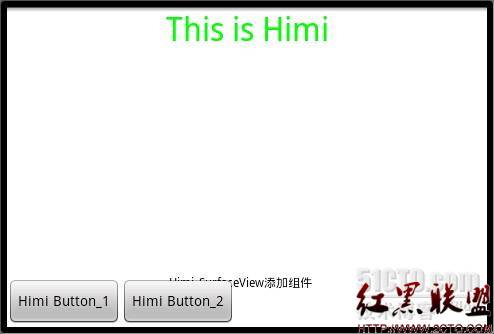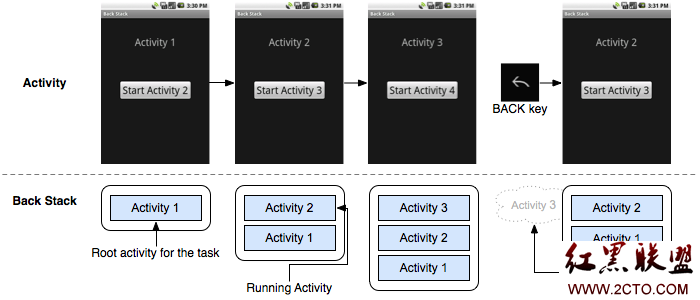android中Touch事件的处理逻辑
android中的事件类型分为按键事件和屏幕触摸事件,Touch事件是屏幕触摸事件的基础事件,有必要对它进行深入的了解。
一个最简单的屏幕触摸动作触发了一系列Touch事件:ACTION_DOWN->ACTION_MOVE->ACTION_MOVE->ACTION_MOVE...->ACTION_MOVE->ACTION_UP
当屏幕中包含一个ViewGroup,而这个ViewGroup又包含一个子view,这个时候android系统如何处理Touch事件呢?到底是ViewGroup来处理Touch事件,还是子view来处理Touch事件呢?我只能很肯定的对你说不一定。呵呵,为什么呢?看看下面我的调查结果你就明白了。
android系统中的每个View的子类都具有下面三个和TouchEvent处理密切相关的方法:
1)public boolean dispatchTouchEvent(MotionEvent ev) 这个方法用来分发TouchEvent
2)public boolean onInterceptTouchEvent(MotionEvent ev) 这个方法用来拦截TouchEvent
3)public boolean onTouchEvent(MotionEvent ev) 这个方法用来处理TouchEvent
当TouchEvent发生时,首先Activity将TouchEvent传递给最顶层的View, TouchEvent最先到达最顶层 view 的 dispatchTouchEvent ,然后由 dispatchTouchEvent 方法进行分发,如果dispatchTouchEvent返回true ,则交给这个view的onTouchEvent处理,如果dispatchTouchEvent返回 false ,则交给这个 view 的 interceptTouchEvent 方法来决定是否要拦截这个事件,如果 interceptTouchEvent 返回 true ,也就是拦截掉了,则交给它的 onTouchEvent 来处理,如果 interceptTouchEvent 返回 false ,那么就传递给子 view ,由子 view 的 dispatchTouchEvent 再来开始这个事件的分发。如果事件传递到某一层的子 view 的 onTouchEvent 上了,这个方法返回了 false ,那么这个事件会从这个 view 往上传递,都是 onTouchEvent 来接收。而如果传递到最上面的 onTouchEvent 也返回 false 的话,这个事件就会“消失”,而且接收不到下一次事件。
通过语言描述这个处理逻辑很抽象,下面我就用代码来具体说明一下。
layout配置文件 main.xml
<?xml version="1.0" encoding="utf-8"?>
<test.lzqdiy.MyLinearLayout xmlns:android="http://schemas.android.com/apk/res/android"
android:orientation="vertical"
android:layout_width="fill_parent"
android:layout_height="fill_parent"
android:gravity="center" >
<test.lzqdiy.MyTextView
android:layout_width="200px"
android:layout_height="200px"
android:id="@+id/tv"
android:text="lzqdiy"
android:textSize="40sp"
android:textStyle="bold"
android:background="#FFFFFF"
android:textColor="#0000FF"/>
</test.lzqdiy.MyLinearLayout>
节点层次很简单,一个LinearLayout中添加了一个TextView。
下面是java代码:
package test.lzqdiy;
import android.app.Activity;
import android.os.Bundle;
public class TestTouchEventApp extends Activity {
/** Called when the activity is first created. */
@Override
public void onCreate(Bundle savedInstanceState) {
super.onCreate(savedInstanceState);
setContentView(R.layout.main);
}
}
package test.lzqdiy;
import android.content.Context;
import android.util.AttributeSet;
import android.util.Log;
import android.view.MotionEvent;
import android.widget.LinearLayout;
public class MyLinearLayout extends LinearLayout {
private final String TAG = "MyLinearLayout";
public MyLinearLayout(Context context, AttributeSet attrs) {
super(context, attrs);
Log.d(TAG, TAG);
}
@Override
public boolean dispatchTouchEvent(MotionEvent ev) {
int action = ev.getAction();
switch (action) {
case MotionEvent.ACTION_DOWN:
Log.d(TAG, "dispatchTouchEvent action:ACTION_DOWN");
break;
case MotionEvent.ACTION_MOVE:
Log.d(TAG, "dispatchTouchEvent action:ACTION_MOVE");
break;
case MotionEvent.ACTION_UP:
Log.d(TAG, "dispatchTouchEvent action:ACTION_UP");
break;
case MotionEvent.ACTION_CANCEL:
Log.d(TAG, "dispatchTouchEvent action:ACTION_CANCEL");
break;
}
return super.dispatchTouchEvent(ev);
}
@Override
public boolean onInterceptTouchEvent(MotionEvent ev) {
int action = ev.getAction();
switch (action) {
case MotionEvent.ACTION_DOWN:
Log.d(TAG, "onInterceptTouchEvent action:ACTION_DOWN");
break;
case MotionEvent.ACTION_MOVE:
Log.d(TAG, "onInterceptTouchEvent action:ACTION_MOVE");
break;
case MotionEvent.ACTION_UP:
Log.d(TAG, "onInterceptTouchEvent action:ACTION_UP");
break;
case MotionEvent.ACTION_CANCEL:
Log.d(TAG, "onInterceptTouchEvent action:ACTION_CANCEL");
break;
}
return false;
}
@Override
public boolean onTouchEvent(MotionEvent ev) {
int action = ev.getAction();
switch (action) {
case MotionEvent.ACTION_DOWN:
Log.d(TAG, "---onTouchEvent action:ACTION_DOWN");
break;
case MotionEvent.ACTION_MOVE:
补充:移动开发 , Android ,




